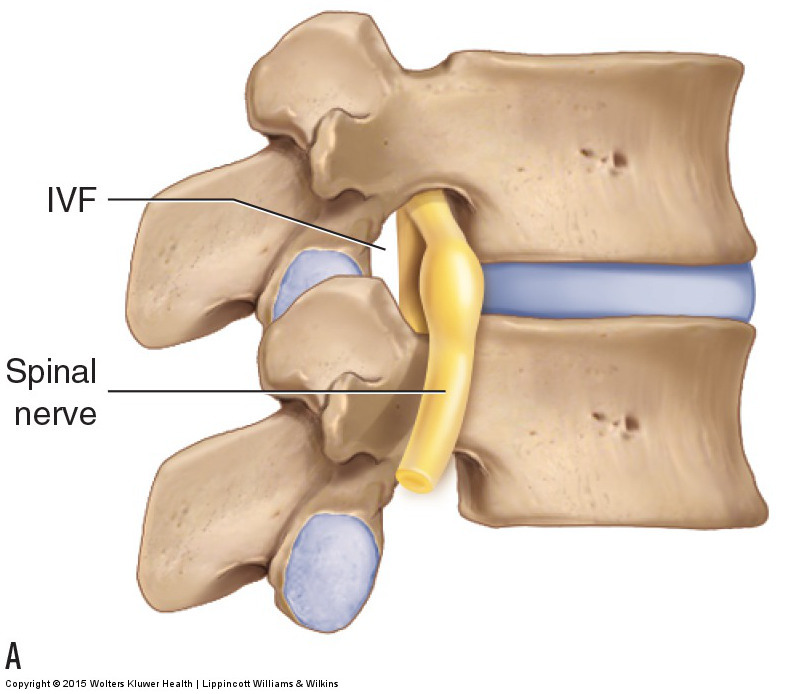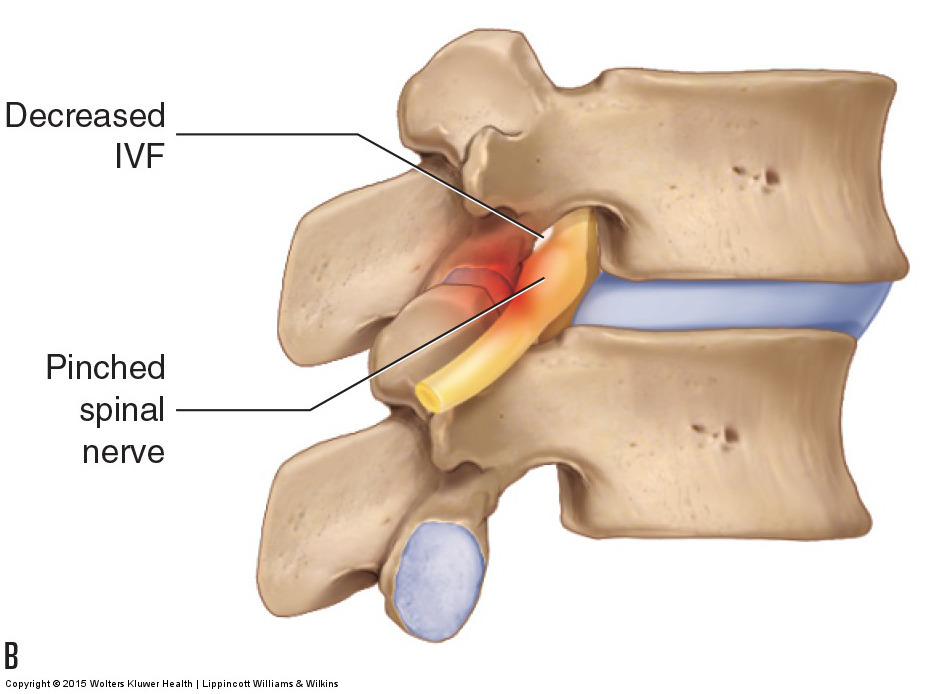Note: This blog post article is the twelfth in a series of twelve articles on musculoskeletal conditions of the low back (lumbar spine) and pelvis. For the rest of the articles in the series, scroll to the end of this article.


Figure 26. Spondylolisthesis. (A) Healthy posture of L4 on L5. (B) Spondylolisthesis of L4 on L5. Right lateral views. Permission Joseph E. Muscolino. Manual Therapy for the Low Back and Pelvis – A Clinical Orthopedic Approach. 2015.
Spondylolisthesis is a condition of the spine in which one vertebra slips on the vertebra below it. This condition usually occurs in the lumbar spine.
Note: The term “spondylolisthesis” should not be confused with “spondylosis.” Spondylosis is another term for osteoarthritis (OA) (also known as degenerative joint disease / DJD) of the spine.
Description of Spondylolisthesis
As stated, spondylolisthesis is a slippage of one vertebra on the vertebra below it. This slippage is usually anterior in direction and can therefore also be described as an anterolisthesis (Fig. 26). Lateral slippage (laterolisthesis) and posterior slippage (posterolisthesis) may occur but are far less common. Indeed, when the term spondylolisthesis is used, unless otherwise specified, it is usually assumed that an anterolisthesis is present.
Mechanism and Causes of Spondylolisthesis
Most often, a spondylolisthesis is due to a break in the pars interarticularis of the vertebra, allowing the body of the superior vertebra to slip anteriorly along the body of the vertebra below. This break could be congenital or it could be acquired via trauma. The degree of spondylolisthesis can be measured by how far the superior vertebral body slips on the inferior vertebral body. Generally, the grading is done on a scale of 1 to 4; the grading may be further defined by subdividing each grade by 10 (Fig. 27). The symptomology of spondylolisthesis can be due to tension on the soft tissues that are tractioned by the slippage. It is also common for spasming of the adjacent musculature to occur in an attempt to splint the region; this muscle spasming can increase the client’s pain. More seriously, if the vertebra slips sufficiently, the intervertebral foramina can be narrowed, resulting in compression of the exiting spinal nerve(s) at that level (see Fig. 26). When this occurs, referral into the lower extremity can occur. Spondylolistheses (plural of spondylolisthesis) tend to be very unstable. The posture of the vertebra may be healthy for an extended period of time, and then a particular motion or posture of the body may cause it to slip, thereby exacerbating the condition.

Figure 27. A spondylolisthesis can be measured by dividing the superior margin of the body of the vertebra below into four equal sections and then subdividing each of these four sections by 10. The spondylolisthesis seen here is grade 1.2. Permission Joseph E. Muscolino. Manual Therapy for the Low Back and Pelvis – A Clinical Orthopedic Approach. 2015.
Note: The Prone Client and Spondylolisthesis
If a client has a lumbar spondylolisthesis (anterolisthesis), it can be helpful to place a roll under his or her lumbosacral region to help support the spine when he or she is lying prone. This prevents the spondylolisthesis vertebra from slipping anteriorly. In fact, placing a roll under the lumbosacral region can be beneficial for most all clients lying prone, not just those with spondylolisthesis or other low back problems.
Note: Treatment Considerations in Brief for Spondylolisthesis
Soft tissue work into the tight musculature that usually accompanies a spondylolisthesis can be very helpful. But ultimately, the best treatment for this condition is for the client to strengthen his or her core musculature to stabilize the region.
This blog post article is the twelfth in a series of twelve articles on musculoskeletal conditions of the low back (lumbar spine) and pelvis.
The articles in this series are:
- Hypertonic / tight muscles
- Myofascial trigger points
- Joint dysfunction
- Sprains and strains
- Sacroiliac joint injury
- Pathologic disc conditions and sciatica
- Piriformis syndrome
- Degenerative joint disease (DJD)
- Scoliosis
- Lower crossed syndrome
- Facet syndrome
- Spondylolisthesis


